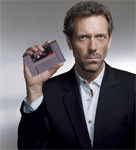INTERESTING BLOG POST ABOUT DEFINING VISUAL STYLE
Posts
Pages:
1
I don't know if you guys play League of Legends, but recently the company who makes the game have been taking huge leaps forward in the game's aesthetics. Basically, the game is mostly played in 20-60 minute-long segments on the same big map, and that map has changed very little over the last 3 or so years; until now, which is a pretty big deal. In my opinion the change has been a huge improvement on the original style, and is quite refreshing to see after playing the game for about 2 years.
Anyway, some of the visual developers who worked on this project have made a blog post about the work they did to define a new visual style for League of Legends. Though most of us aren't working on a game that's going to be anything like League, it's still interesting to see them talk about the kinds of decisions they made when they were working on the new map, and a lot of it is still relatable to any kind of game.
It's a cool read, and I suggest you guys check it out. Here's a link.
http://promo.na.leagueoflegends.com/en/summoners-rift/
Anyway, some of the visual developers who worked on this project have made a blog post about the work they did to define a new visual style for League of Legends. Though most of us aren't working on a game that's going to be anything like League, it's still interesting to see them talk about the kinds of decisions they made when they were working on the new map, and a lot of it is still relatable to any kind of game.
It's a cool read, and I suggest you guys check it out. Here's a link.
http://promo.na.leagueoflegends.com/en/summoners-rift/
Fuck man, I can't wait for the new Summoner's Rift. I read a little bit before on Surrender at 20 about how they went about making the new map, and it's definitely interesting stuff. Anyone who cares about aesthetics in their games should read up on it.
EDIT: I'd like to note that perhaps the most interesting part of this for me is how it perfectly outlines why artistic style and gameplay are really tightly linked together. One of the biggest problems on the current version of Summoner's Rift lies within the fact that all the vibrant colours and shapes make the champs blend in a lot more, making the game harder to play. The way they've gone about making the map a background to the gameplay while still maintaining the same style throughout is very professional.
EDIT: I'd like to note that perhaps the most interesting part of this for me is how it perfectly outlines why artistic style and gameplay are really tightly linked together. One of the biggest problems on the current version of Summoner's Rift lies within the fact that all the vibrant colours and shapes make the champs blend in a lot more, making the game harder to play. The way they've gone about making the map a background to the gameplay while still maintaining the same style throughout is very professional.
LockeZ

I'd really like to get rid of LockeZ. His play style is way too unpredictable. He's always like this too. If he ran a country, he'd just kill and imprison people at random until crime stopped.
5958
The stuff about vibrancy layers seems applicable to basically any type of game. For an RPG, for example, it's a really good way of communicating the presence of interactive objects, puzzle elements, important NPCs or roaming enemies in a town or dungeon, without putting sparkles and exclamation points above everything.
Personally, my method is different - textured art for the background layer and pixel art for the interactive layer. I've seen other games use black borders as a distinction. Though, the puzzle elements in my dungeons intentionally blend into the background to make the puzzles require more observation.
Personally, my method is different - textured art for the background layer and pixel art for the interactive layer. I've seen other games use black borders as a distinction. Though, the puzzle elements in my dungeons intentionally blend into the background to make the puzzles require more observation.
Pages:
1
















